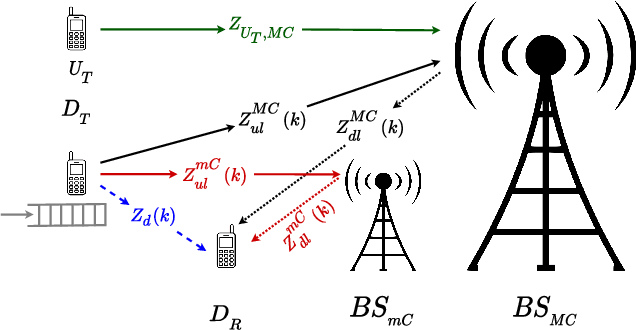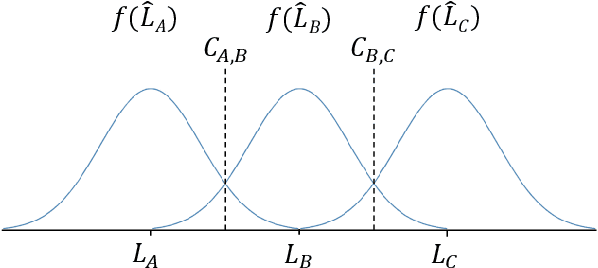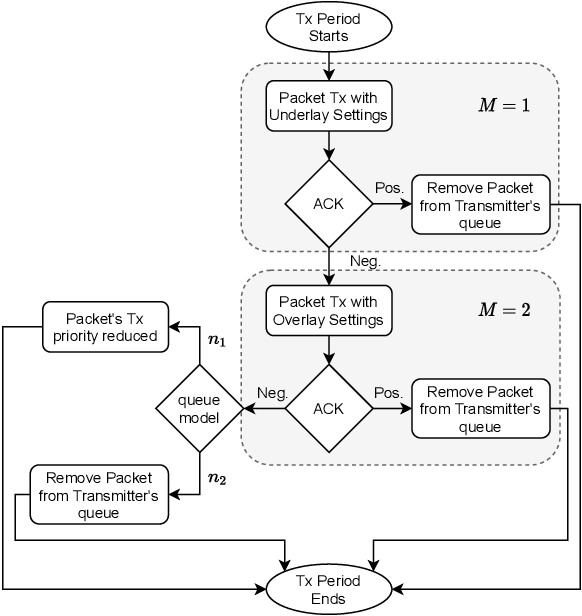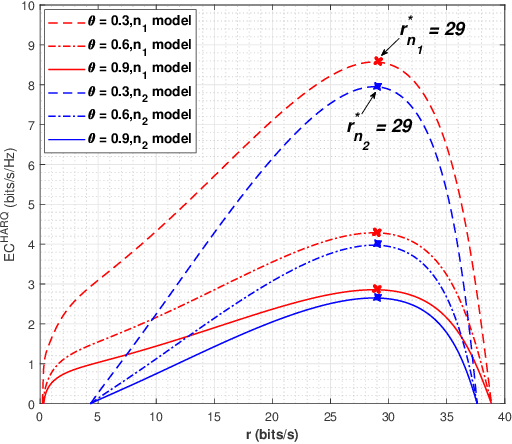Effective Capacity Analysis of HARQ-enabled D2D Communication in Multi-Tier Cellular Networks
Paper and Code
Jul 26, 2021



This work does the statistical quality-of-service (QoS) analysis of a block-fading device-to-device (D2D) link in a multi-tier cellular network that consists of a macro-BS (BSMC) and a micro-BS (BSmC) which both operate in full-duplex (FD) mode. For the D2D link under consideration, we first formulate the mode selection problem-whereby D2D pair could either communicate directly, or, through the BSmC, or, through the BSMC-as a ternary hypothesis testing problem. Next, to compute the effective capacity (EC) for the given D2D link, we assume that the channel state information (CSI) is not available at the transmit D2D node, and hence, it transmits at a fixed rate r with a fixed power. This allows us to model the D2D link as a Markov system with six-states. We consider both overlay and underlay modes for the D2D link. Moreover, to improve the throughput of the D2D link, we assume that the D2D pair utilizes two special automatic repeat request (ARQ) schemes, i.e., Hybrid-ARQ (HARQ) and truncated HARQ. Furthermore, we consider two distinct queue models at the transmit D2D node, based upon how it responds to the decoding failure at the receive D2D node. Eventually, we provide closed-form expressions for the EC for both HARQ-enabled D2D link and truncated HARQ-enabled D2D link, under both queue models. Noting that the EC looks like a quasi-concave function of r, we further maximize the EC by searching for an optimal rate via the gradient-descent method. Simulation results provide us the following insights: i) EC decreases with an increase in the QoS exponent, ii) EC of the D2D link improves when HARQ is employed, iii) EC increases with an increase in the quality of self-interference cancellation techniques used at BSmC and BSMC in FD mode.
 Add to Chrome
Add to Chrome Add to Firefox
Add to Firefox Add to Edge
Add to Edge